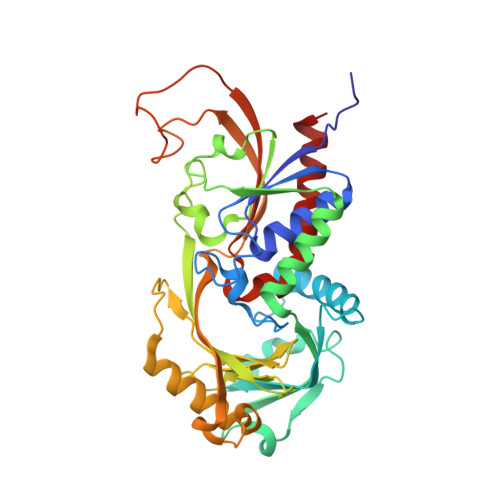The x-ray structure of D-amino acid oxidase at very high resolution identifies the chemical mechanism of flavin-dependent substrate dehydrogenation.
Umhau, S., Pollegioni, L., Molla, G., Diederichs, K., Welte, W., Pilone, M.S., Ghisla, S.(2000) Proc Natl Acad Sci U S A 97: 12463-12468
- PubMed: 11070076
- DOI: https://doi.org/10.1073/pnas.97.23.12463
- Primary Citation of Related Structures:
1C0K, 1C0L, 1C0P - PubMed Abstract:
Flavin is one of the most versatile redox cofactors in nature and is used by many enzymes to perform a multitude of chemical reactions. d-Amino acid oxidase (DAAO), a member of the flavoprotein oxidase family, is regarded as a key enzyme for the understanding of the mechanism underlying flavin catalysis. The very high-resolution structures of yeast DAAO complexed with d-alanine, d-trifluoroalanine, and l-lactate (1.20, 1.47, and 1.72 A) provide strong evidence for hydride transfer as the mechanism of dehydrogenation. This is inconsistent with the alternative carbanion mechanism originally favored for this type of enzymatic reaction. The step of hydride transfer can proceed without involvement of amino acid functional groups. These structures, together with results from site-directed mutagenesis, point to orbital orientation/steering as the major factor in catalysis. A diatomic species, proposed to be a peroxide, is found at the active center and on the Re-side of the flavin. These results are of general relevance for the mechanisms of flavoproteins and lead to the proposal of a common dehydrogenation mechanism for oxidases and dehydrogenases.
Organizational Affiliation:
Section of Biology, University of Konstanz, P. O. Box 5560-M644, D-78434 Konstanz, Germany.
















